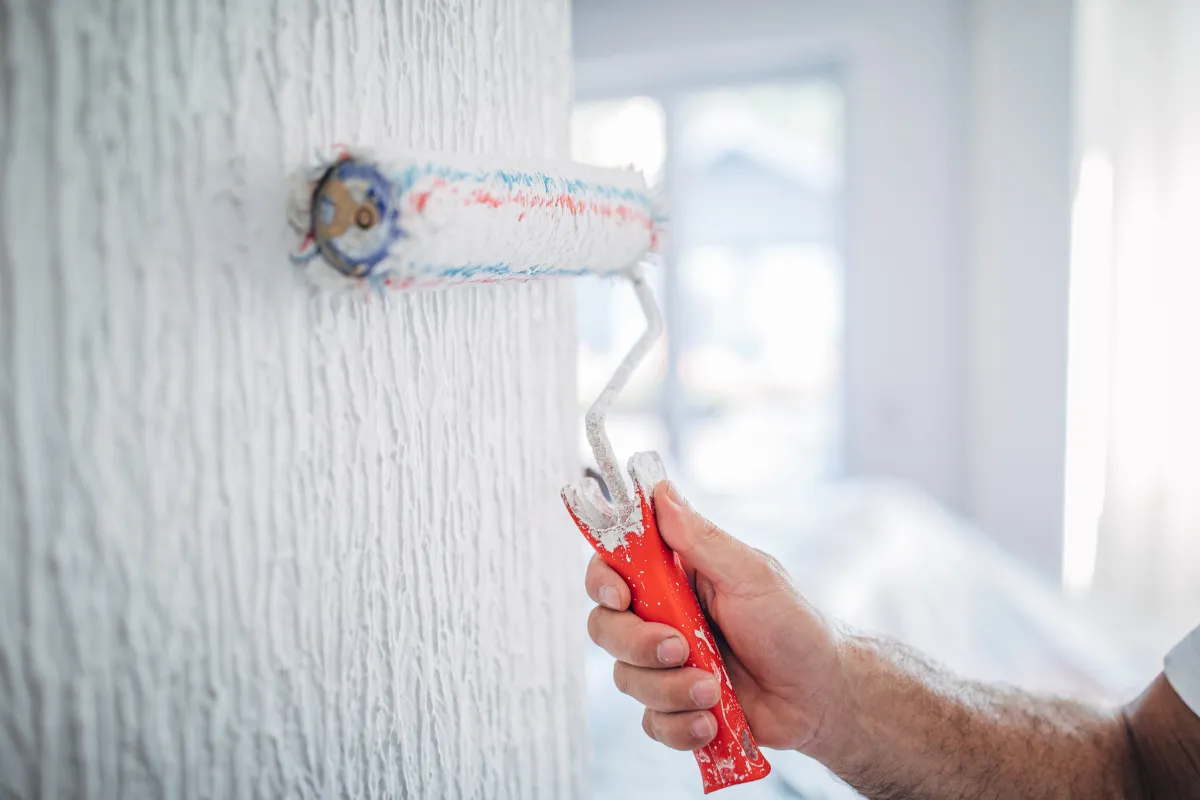Transforming your walls with paint is a cost-effective and creative way to enhance the look and feel of any room. Whether you’re aiming for a subtle accent or a bold statement, there are numerous painting techniques that can add depth, texture, and visual interest to your walls. From stripes to stencils, here are seven creative wall painting techniques to inspire your next home decor project:
1. Striped Walls
Horizontal or vertical stripes can instantly elevate the style of a room and create visual interest. Use painter’s tape to mark off even stripes and alternate between two or more complementary colors for a modern and dynamic look. Experiment with different widths and angles to achieve the desired effect, whether it’s subtle and sophisticated or bold and dramatic.
2. Ombre Walls
Ombre, meaning “shaded” in French, is a painting technique that transitions from one color to another, creating a gradient effect. Start with a base color and gradually blend lighter or darker shades of the same color to achieve a seamless transition from floor to ceiling or across the width of the wall. Ombre walls add a soft and serene ambiance to any space, making them perfect for bedrooms, nurseries, or living rooms.
3. Stenciled Patterns
Stenciling allows you to add intricate patterns and designs to your walls with precision and ease. Choose a stencil pattern that complements your decor style, whether it’s geometric shapes, floral motifs, or intricate damask patterns. Use a stencil brush or roller to apply paint evenly over the stencil, taking care to avoid smudges or bleeding. Stenciled patterns can add texture and dimension to accent walls, alcoves, or focal points in any room.
4. Sponge Painting
Sponge painting is a versatile technique that adds texture and depth to your walls. Start by applying a base coat of paint and allow it to dry completely. Then, dip a natural sea sponge or synthetic sponge into a contrasting color of paint and dab it onto the wall in a random or overlapping pattern. Experiment with different sponge sizes and densities to achieve the desired texture and coverage. Sponge painting is great for creating faux finishes such as stone, marble, or aged plaster.
5. Color Blocking
Color blocking involves painting geometric shapes or sections of a wall in contrasting colors to create a bold and contemporary look. Use painter’s tape to mark off clean lines and apply paint to each section using a roller or brush. Color blocking can be as simple or intricate as you like, with options ranging from large-scale rectangles to intricate geometric patterns. This technique adds visual interest and personality to feature walls, alcoves, or entryways.
6. Metallic Accents
Add a touch of glamour and sophistication to your walls with metallic accents. Metallic paint can be used to highlight architectural features, create focal points, or add subtle shimmer to any room. Apply metallic paint to trim, molding, or stenciled designs for a subtle yet elegant effect. For a more dramatic look, consider painting an entire wall or ceiling with metallic paint to create a statement-worthy backdrop.
7. Textured Finishes
Textured finishes such as faux brick, concrete, or Venetian plaster can add depth and character to your walls. Use specialized painting techniques or textured paint additives to achieve the desired effect. Textured finishes are ideal for creating a rustic, industrial, or Old World charm in any room. Experiment with different textures and colors to create a unique and personalized look that reflects your style and personality.
Conclusion: Elevate Your Walls with Creative Painting Techniques
With these seven creative wall painting techniques, you can transform your walls from ordinary to extraordinary. Whether you prefer subtle accents or bold statements, there’s a painting technique to suit every taste and style. Experiment with colors, patterns, and textures to create a unique and personalized look that enhances the ambiance of your home.
FAQs: Addressing Common Questions About Wall Painting Techniques
Q: Are these painting techniques suitable for beginners?
Yes, many of these painting techniques are beginner-friendly and can be easily mastered with practice. Start with simple techniques such as color blocking or sponge painting before progressing to more intricate methods like stenciling or ombre.
Q: Can I use these techniques in any room of my home?
Absolutely! These painting techniques can be used in any room of your home, from bedrooms and living rooms to kitchens and bathrooms. Consider the style and function of each space when choosing the right technique and color palette.
Q: How do I choose the right colors for my walls? A: When selecting paint colors, consider the existing decor, lighting, and ambiance of the room. Choose colors that complement your furnishings and fixtures while creating the desired mood or atmosphere. Don’t be afraid to experiment with different shades and tones until you find the perfect combination.
Q: Can I combine multiple painting techniques in one room?
Yes, mixing and matching painting techniques can add visual interest and depth to your walls. Consider combining techniques such as color blocking with stenciled patterns or metallic accents for a truly unique and personalized look.
Q: Do I need to prep my walls before painting?
Yes, proper preparation is essential for achieving professional-looking results. Clean the walls thoroughly to remove dirt, dust, and grease. Repair any cracks or holes with spackling compound and sand the surface smooth. Prime the walls with a high-quality primer to ensure adhesion and durability of the paint finish.

